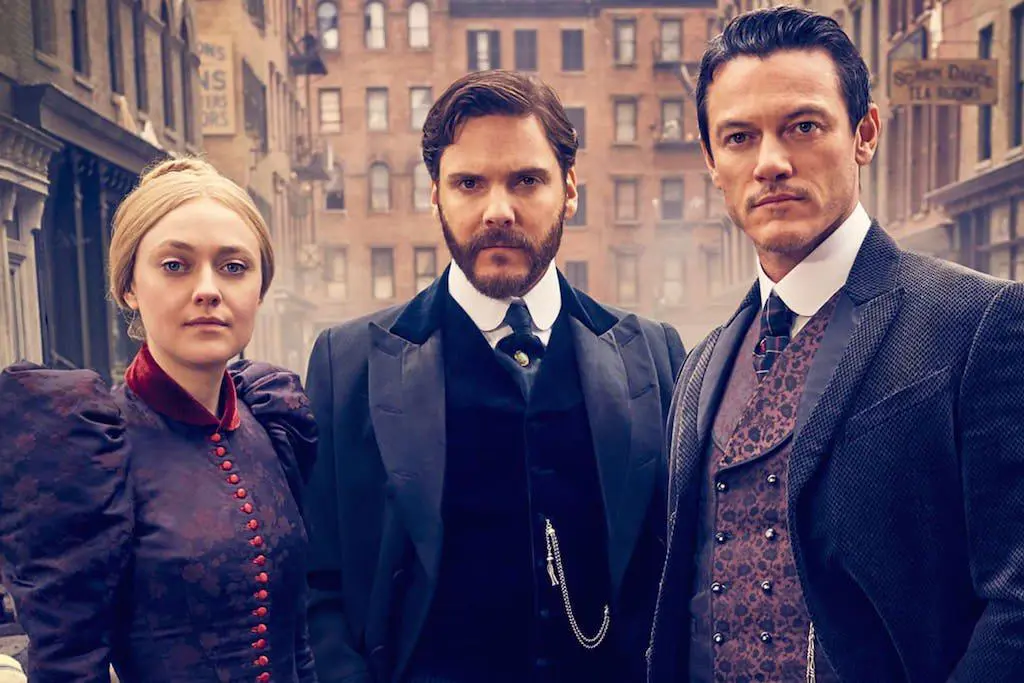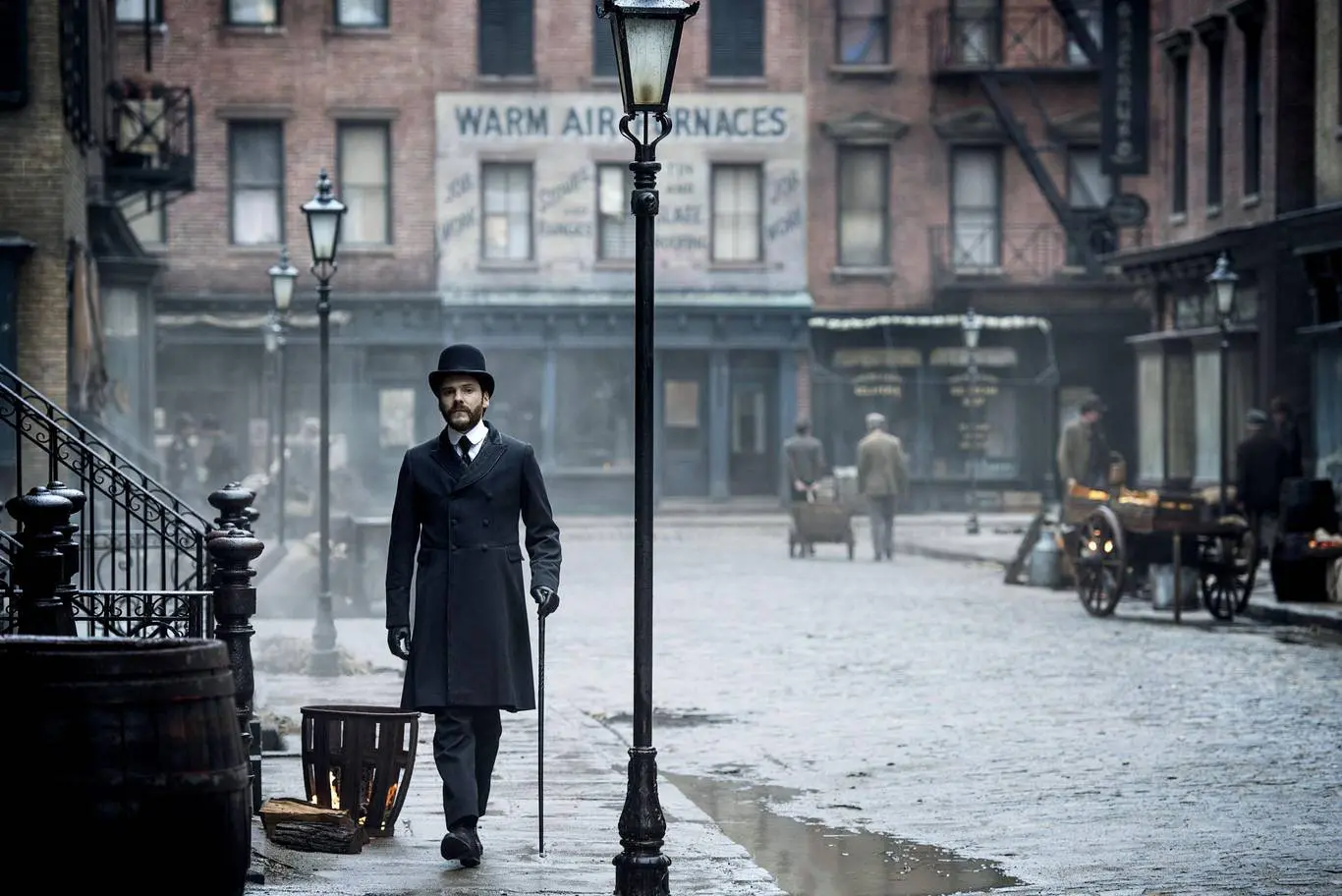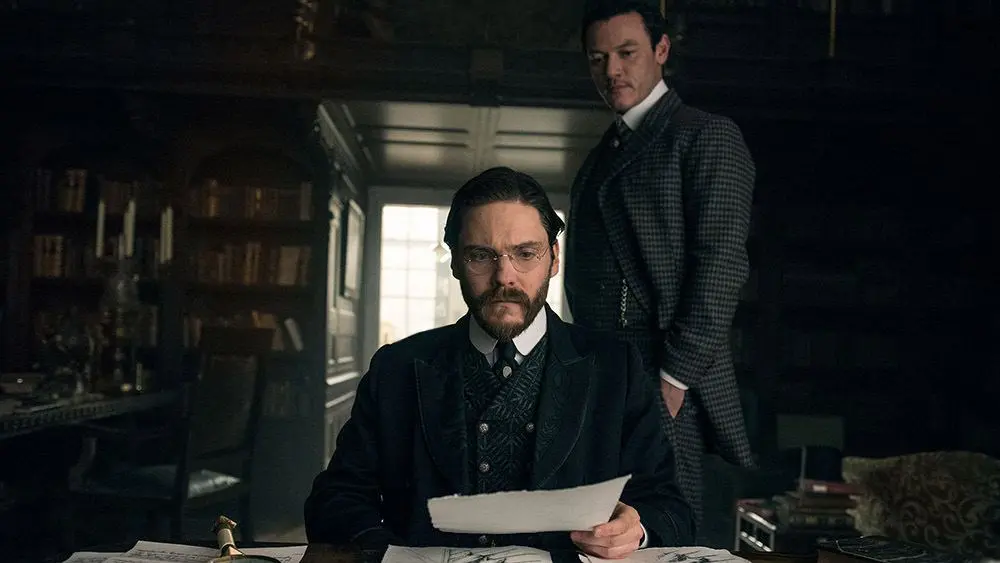Summary
The Alienist is a stylish mystery drama series set at the end of the nineteenth century. It follows an unofficial team of investigators led by a psychologist (or “alienist”) trying to identify and stop the murderer of young boys in New York.
In the 19th century, persons suffering from mental illness were thought to be alienated from their own true natures. Experts who studied them were therefore known as alienists.
Those lines appear as an introduction at the start of each episode of The Alienist, telling viewers just how early this story takes place in the history of psychology. In the last years of the nineteenth century, the world we know now could be seen on the horizon in a number of respects: science and civil rights alike were both on the verge of exploding; and these both had a serious impact on society in general, not least in the context of law and order. Which in turn was ready for its own revolution.
According to The Alienist, the New York Police Department was more concerned with maintaining a status quo which best suited their associates in the church and big industry. This generally meant a combination of traditionalism, corruption and turning a blind eye to crimes which didn’t feature on the main agenda. Theodore Roosevelt (Brian Geraghty) was police commissioner in New York at this time, and when young boys started turning up murdered and mutilated (prostitutes and immigrants, no less; definitely low priority), he saw that the only way to get the crime resolved effectively was to authorize an unofficial investigation. This was already underway, led by the renowned/controversial “alienist” Dr. Laszlo Kreizler (Daniel Brühl) and his friend from the New York Times John Moore (Luke Evans). By the end of the second episode, Roosevelt had authorized the use of police time in the form of three more forward-thinking individuals, with the challenge that Kreizler solve the crimes before the official (and slack) police investigation could, so as to prove the value in radical approaches. These three were Sara Howard (Dakota Fanning), the first woman to join the police department – albeit as a “typewriter”, though with the mind of a detective – and brothers Marcus (Douglas Smith) and Lucius (Matthew Shear) Isaacson, who relished new scientific investigatory tools such as fingerprints. Thus the “fruitful partnership” is born.

So in a nutshell, The Alienist gives you a mystery/thriller, history, and social commentary squeezed into one ten-episode story. So far, so Mindhunter. Now, I loved Mindhunter (for its unhurried style, its characters and the tension from its murderers); but having watched that within the last few months, it was difficult to view The Alienist without those similarities jumping straight out at me.
The series (first aired in the USA by TNT, then released internationally by Netflix) was based on the 1994 novel of the same name by Caleb Carr. I haven’t read the novel, but I did listen to the audio edition of the sequel, Angel of Darkness (the first book wasn’t available as an audiobook, in case you’re wondering) last year, so was already familiar with the style and the main characters. And although I enjoyed that novel for its winding and interesting plot, I did wonder at the time about the sheer quantity of historical and social milestones one group of people could be involved with. What’s Carr going to write next, I thought? Was Sara Howard on the Titanic when it went down? Did John Moore see the Depression coming? That kind of thing was just as distracting in the TV show as in the book I listened to, despite the engaging plot, but I can understand how it was written that way: Caleb Carr is a historian by training, though grew up dreaming of writing fiction; it makes sense that he brought the two together.
 The novel provided a terrific plot, as well as a rich sense of time and place. But carrying forward the stilted dialogue was not so successful. I don’t get it, either: The Alienist has some experienced writers in its pedigree: John Sayles, Hossein Amini and Cary Fukunaga of all people! Because of that, it’s difficult to judge the actors. Daniel Brühl showed promise (is it me or does he usually end up in period roles?) and I’m warming to the idea of seeing Entebbe; but his character was very (correctly) reserved, so I’m not sure how demanding a role it was. The main disappointment (both as an actor and adaptation) was Dakota Fanning as Sara Howard: she stares into the camera rather than expressing much, and comes across as dull, despite her achievements; the Sara I got to know in the book was downright bouncy in comparison!
The novel provided a terrific plot, as well as a rich sense of time and place. But carrying forward the stilted dialogue was not so successful. I don’t get it, either: The Alienist has some experienced writers in its pedigree: John Sayles, Hossein Amini and Cary Fukunaga of all people! Because of that, it’s difficult to judge the actors. Daniel Brühl showed promise (is it me or does he usually end up in period roles?) and I’m warming to the idea of seeing Entebbe; but his character was very (correctly) reserved, so I’m not sure how demanding a role it was. The main disappointment (both as an actor and adaptation) was Dakota Fanning as Sara Howard: she stares into the camera rather than expressing much, and comes across as dull, despite her achievements; the Sara I got to know in the book was downright bouncy in comparison!
I can accept novel adaptations not being identical to their sources (a good deal of Carr’s fans have expressed alarm at the changes), as long as the spirit and major plot points and characters are kept. Let the Right One In: very good. Alice Through the Looking Glass: travesty. In The Alienist, it seems to me there was such determination to adapt the setting and main plot with care that a few minor plot points and characters were squeezed so small as to have an insufficient explanation. That didn’t spoil the show for me (the plot was good enough to carry it, along with the camera work and production; more shortly), simply a comment on the issue of adaptation. Sara’s (meaningful?) staring was darned annoying, though.
The other annoying thing was the text of that title screen that – as I mentioned at the beginning – is presented at the start of each episode. Yes, you are expected to read it ten times; eleven if you count this article. And then it dawned on me: I was watching The Alienist via Netflix, at my schedule (usually two or three episodes a day, on my work commute). But when it was first released in the USA, it was shown weekly; so it may have been beneficial to get viewers back into the world of The Alienist every time. Perhaps it could have been removed for Netflix.
The performance that stood out to me the most in The Alienist was that of the camera. As per the writer and director, there were several people filling the cinematography role, but I didn’t notice: every episode was beautifully shot, with wide angles from the bottom of the steps of City Hall, for example; lighting onto flowers in the final episode; and even the unrefined yet clinical work in the autopsies. Although some of the seedy settings out The Limehouse Golem came to mind, the production in this show was much less claustrophobic, visiting rooftops at times as well as a rural township. Even the prison and asylum scenes were sharply shot, not dingy, as you might expect from period dramas.
I should warn you that as period dramas go, The Alienist is full of gritty and challenging scenes and images: and not just the mutilated “boy whores” dressed as girls. There are issues of child and domestic abuse, anti-Semitism. And it’s not the kind of story where those who ought to win do. If you liked The Limehouse Golem‘s sleaze but thought the victims deserved a bit more respect, give this a look. If you liked the visual/pacing style of True Detective or Hannibal, The Alienist may be a good fit for you too. And of course, it’s also for fans of Mindhunter, who want to push the clock back farther.




